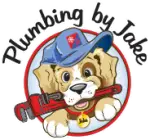Encountering clogged drains or toilets is a common occurrence. The instinct of most homeowners and renters is to buy a bottle of Drano and pour it down the drain to get rid of the clog, but the truth is that Drano can do far more damage to your plumbing than a clog can. Over time, using Drano may end in costly plumbing repairs, while a regular drain cleaning from a professional plumber can help avoid major repairs.
When a drain is clogged, it can be frustrating and stressful. It may seem like the easiest thing to do is reach for a bottle of Drano. Instead, the best option is to call Plumbing by Jake to clear those drains.
We want you and your plumbing to be healthy and happy for years to come. This blog will teach you what Drano actually is, how the product works, and the reasons plumbers do not want you to use it.
Drano’s Chemical Reactions
Drano is a product made from lye, which can be used as a common drain-clearing agent. After liquid Drano is poured down the sink and comes in contact with a clog or a blockage, a chain of chemical reactions happens with the lye, and it begins to dissolve and decompose the masses that formed the clogged and blocked pipes. During the first reaction, the Drano’s lye begins to decompose the matter that clogs the pipes.
After that, the Drano’s aluminum components react with the lye. This results in the rising temperatures of the pipe’s contents, reaching a boiling point that helps increase decomposition. In the final reaction, the lye bubbles and forms a soapy substance.
During this soapy stage, the clogged materials dissolve. The dissolving allows water to move around and through the clog, releasing the remnants and washing away the clog.
Drano’s chemicals are extremely strong and effective at eating away whatever clogs the pipes. But these chemicals are so strong that they can also eat away at the plastic and metal plumbing, causing severe damage to the pipes.
Because professional plumbers have seen the irreversible harm that the frequent use of Drano can cause, they adamantly advise against using it. This is especially true if homeowners and businesses continuously practice solving their plumbing issues with a quick fix that’s actually creating a long-term problem.
Drano’s Corrosive Effects
When Drano is applied to clogged pipes, it sits on the clog and continually reacts. As Drano’s chemical agents generate heat, the clog dissolves. These chemical agents are so corrosive that they are really effective in clearing drains, but unfortunately, this corroding effect can cause PVC pipes to soften.
In some situations, the heat from these reactions can put so much stress on the pipes that they break or collapse. While the clog dissolves, Drano’s quick-acting agents also break up the chemical compounds of the glue that holds the pipes together. The leaks caused by the degrading glue can lead to costly repairs.
Drano should never be used to unclog a toilet as the results can be devastating. The toilet’s porcelain cannot withstand the heat generated during Drano’s chemical reaction. The results of not avoiding Drano can cause numerous potential damages that can get really expensive.
Drano’s Environmental Damage
When Drano pours down the sink, it encounters the clog and destroys it. Then, the chemical gel works its way through the building or home’s pipes – but it does not stop there. It has to go somewhere.
Drano exits the individual plumbing, entering municipal sewer systems. There, a new set of problems has begun, affecting the environment profoundly. Drano’s toxicity and corrosiveness agents can damage plants and poison animals when it contacts local water sources.
And if it makes it back to water treatment centers, the toxins can contaminate local water supplies. Even if the Drano leaves an individual’s plumbing relatively undamaged, it can have a long-lasting impact on the environment around us.
Drano’s Continued Use
Drano only acts as a temporary fix. The most effective this product can be is clearing a clogged pipe. It can mislead homeowners and business owners, thinking a cheap and easy fix is all they need, meanwhile, a clogged pipe may be the sign of a more serious plumbing problem.
If a drain has a chronic clog, this is a bigger plumbing issue than Drano can fix. The repeated use of Drano only compounds the issue and causes more severe damage in the long run.
If someone makes the mistake of using Drano on a clogged sink, it should stop there. If the clog returns and Drano continues to be used, every drop of Drano could be doing additional damage, making pipes melt, dissolving the glue that holds them together, and harming the local environment where they live.
How to Clear a Clog Without Drano
When faced with a clogged toilet or sink, there are many options—plungers and drain snakes. It is always best to put these tools in a skilled technician’s hands. Not only can they use these tools most effectively, but a professional can also see any potential problems and find the best paths going forward.
When you encounter a clogged drain, instead of creating additional plumbing costs for yourself, put the Drano down and make the better choice-contact an experienced plumber. That way, the problem can be professionally addressed.
Contact Plumbing by Jake for Drain Clearing Services in Golden Valley Today
The risks associated with Drano should make the decision to call a plumber easy. In the long run, it is a cheaper and safer option to allow a plumber to clear a clog. The experienced and professional plumbers at Plumbing by Jake can clear even the worst clogs.
We have kept the water flowing in homes and businesses all over Golden Valley, Arizona. For same-day or 24/7 emergency services, call our office or contact us anytime to schedule an appointment. Leave the plumbing issues to us, so you can get your household or business back to normal.

